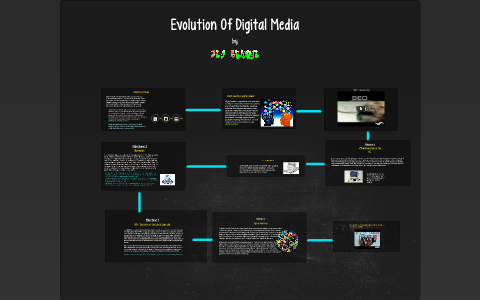Understanding EAMS Case Lookup: A Complete Guide
When navigating workers’ compensation matters, having access to the right case information can make all the difference. One of the most useful tools available is the eams case lookup, a digital system that provides quick access to case details under the Division of Workers’ Compensation (DWC). For employees, employers, attorneys, and claims administrators, understanding how to use this system effectively can save both time and effort.
In this guide, we’ll break down what the eams case lookup is, why it matters, and how you can use it step by step without confusion.
What is EAMS Case Lookup?
The eams case lookup is a tool that allows users to find workers’ compensation case details maintained by the DWC. EAMS stands for the Electronic Adjudication Management System, a database designed to streamline case information, filings, and records.
Instead of searching through stacks of paperwork or calling multiple offices, users can simply use the eams case lookup system online to view public case information. This provides better transparency, quicker results, and a more efficient process for all parties involved.
Why is the EAMS Case Lookup Important?
Workers’ compensation claims often involve multiple steps, parties, and documents. Without a proper system, keeping track of every detail can be overwhelming. The eams case lookup brings organization into the process.
Here’s why it matters:
- Efficiency: Reduces the need for manual record searches.
- Transparency: Provides access to publicly available case information.
- Convenience: Allows searches using case number or injured worker’s name.
- Accuracy: Ensures up-to-date records without delays.
Whether you are a worker looking up your claim, an attorney preparing for a hearing, or an employer checking case status, the eams case lookup is an essential resource.
Who Can Use the EAMS Case Lookup?
The system is designed for multiple users, including:
- Injured workers who want to check the progress of their cases.
- Employers verifying claims against them.
- Attorneys and legal representatives preparing documents.
- Claims administrators or insurance providers monitoring case activity.
Since the eams case lookup makes only limited case details available to the public, sensitive information remains protected while still giving general access to case progress.
How to Access the EAMS Case Lookup System
Using the eams case lookup system is straightforward. Here’s a simplified step-by-step process:
Step 1: Visit the DWC Website
Go to the official Division of Workers’ Compensation (DWC) website. This is where the eams case lookup tool is hosted.
Step 2: Locate the Search Tool
On the site, find the section dedicated to case searches. It will usually be labeled as EAMS Public Search or EAMS Case Lookup.
Step 3: Choose Your Search Criteria
You can search using either:
- Case Number: The most direct method.
- Injured Worker’s Name: Useful if you do not have the case number.
Step 4: Enter Information
Type in the required details carefully. Accuracy matters because small mistakes can return no results.
Step 5: Review Case Results
The system will display case information such as hearing dates, status updates, and other public data available through the eams case lookup.
Tips for Using the EAMS Case Lookup Effectively
To get the most out of the system, keep these points in mind:
- Double-check spelling when searching by name.
- Have the case number ready for faster results.
- Know privacy limits: Not all information is visible to the public.
- Search during system availability: The portal may be temporarily down for updates.
By following these best practices, your eams case lookup experience will be smooth and efficient.
Common Issues and How to Solve Them
Sometimes, users may face challenges while using the eams case lookup system. Here are a few common problems and solutions:
- No Results Found: Re-enter the case number or check spelling of the worker’s name.
- System Timeout: Refresh the page or try again later.
- Confusing Results: Multiple cases may appear if names are similar; narrow down using additional details.
If issues persist, contacting the DWC support team is the best way forward.
Advantages of EAMS Case Lookup Over Traditional Methods
Before digital systems, case lookups often involved calling clerks or visiting offices. The eams case lookup system has improved this process by:
- Allowing 24/7 online access.
- Eliminating unnecessary paperwork.
- Reducing delays in communication.
- Providing up-to-date records in seconds.
This transformation reflects how technology is reshaping the way legal and administrative processes are handled.
Real-World Uses of the EAMS Case Lookup
Here are some scenarios where the eams case lookup proves valuable:
- Injured Worker: A worker checks the status of a scheduled hearing.
- Employer: A company reviews claims made by employees.
- Attorney: A lawyer confirms case progress before court appearances.
- Insurance Representative: An insurer tracks claim updates to process settlements.
In each case, the eams case lookup becomes a reliable, centralized point of information.
The Future of Case Lookups in Workers’ Compensation
As technology advances, the eams case lookup system may expand with new features. Future improvements could include:
- More user-friendly design for easier navigation.
- Integration with mobile apps for quick access.
- Enhanced search options to filter results more effectively.
- Real-time updates on filings and hearings.
Such changes would make the eams case lookup even more powerful for all users.
Final Thoughts
The eams case lookup is more than just a search tool—it’s a gateway to accessible, organized, and efficient case information. For anyone involved in workers’ compensation, this system saves time, reduces stress, and promotes transparency.
By learning how to use it properly, you ensure that important case details are always just a few clicks away. Whether you are an injured worker, an employer, or a legal professional, the eams case lookup system can make navigating workers’ compensation cases much easier.





